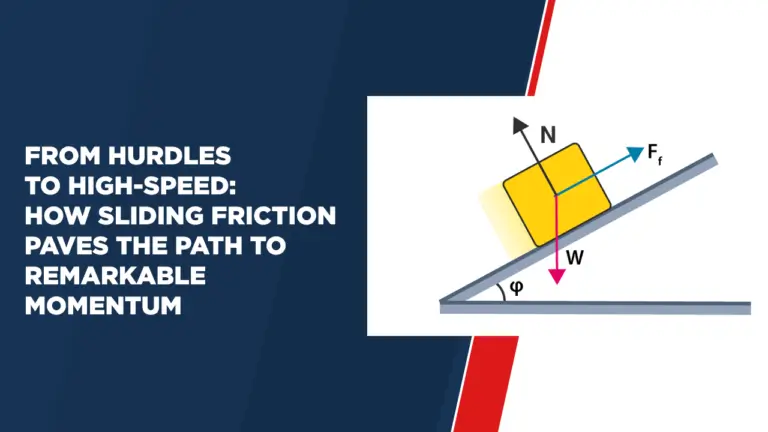From Hurdles to High-Speed: How Sliding Friction Paves the Path to Remarkable Momentum
Introduction
Friction, an essential force in our everyday lives, plays an important role in determining how objects interact with each other. Among the different types of friction, sliding friction is a phenomenon that greatly affects the motion of objects on surfaces. This article highlights the concept of sliding friction, its characteristics, main differences from other types of friction, and provides real-world examples to illustrate its importance.
What is Sliding Friction?
Sliding friction, also known as kinetic friction, occurs when two solid surfaces slide against each other. This type of friction opposes the motion of the objects in contact and can result in wear and heat generation. Sliding friction is responsible for the resistance you feel when pushing a heavy object on the floor or for the loud noise produced by brakes in vehicles.
Explaining Why Sliding Friction is Less Than Static Friction
Static friction refers to the force that opposes the initiation of motion between two objects that are at rest. When an object is stationary, microscopic irregularities on its surface combine with the surface it rests on, creating a high degree of friction known as static friction. However, when the object begins to move, the interlocking is broken, and friction is reduced to a lower level of sliding friction. This transition occurs because it is easier to overcome the interlocking bonds once the motion has started.
Difference Between Rolling Friction and Sliding Friction
Rolling friction is another type of friction that occurs when an object rolls over a surface. The main difference is in the nature of the contact. In sliding friction, the surfaces slide against each other, while in rolling friction, the contact occurs at a point or a small area. Rolling friction is generally less than sliding friction due to less contact area and the distribution of forces over a larger area..
Rolling Friction is Less Than Sliding Friction
The efficiency of rolling friction in reducing resistance during motion can be attributed to the way the load is distributed. When an object rolls, the point of contact continually changes, which distributes the force more evenly. This produces less heat and wear than sliding friction, where the contact is over a larger area.
Sliding Friction Examples
- Pushing a book:
When you push a book on a table, you experience sliding friction. The resistance you feel is the result of sliding friction between the surface of the book and the table.
2. Braking in vehicles:
The braking system in vehicles depends on the sliding friction between the brake pads and the rotating brake disc. This friction converts kinetic energy into heat, which slows the vehicle down.
3. Ice Skating:
Ice skaters experience less sliding friction due to less contact area between the blades and the ice, allowing them to glide more easily.
Conclusion
Sliding friction is a fundamental force that affects various aspects of our daily lives. Understanding its nature, differences from other friction types, and real-world examples helps us appreciate its importance. While sliding friction is greater than rolling friction, it is a reminder of the complex interactions between surfaces and how they affect the motion of objects in our dynamic world.




